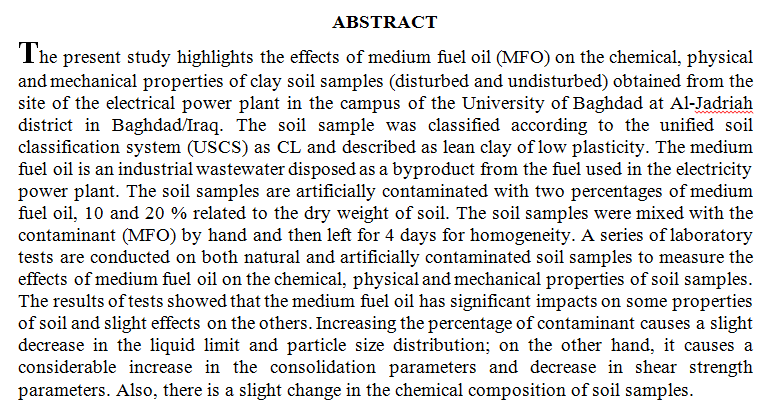
Hydrocarbon displacement at the pore scale is mainly controlled by the wetness properties of the porous media. Consequently, several techniques including nanofluid flooding were implemented to manipulate the wetting behavior of the pore space in oil reservoirs. This study thus focuses on monitoring the displacement of oil from artificial glass porous media, as a representative for sandstone reservoirs, before and after nanofluid flooding. Experiments were conducted at various temperatures (25 – 50° C), nanoparticles concentrations (0.001 – 0.05 wt% SiO2 NPs), salinity (0.1 – 2 wt% NaCl), and flooding time. Images were taken via a high-resolution microscopic camera and analyzed to investigate the displacement of the oil at dif
... Show More (2)
(2)
Hydrocarbon displacement at the pore scale is mainly controlled by the wetness properties of the porous media. Consequently, several techniques including nanofluid flooding were implemented to manipulate the wetting behavior of the pore space in oil reservoirs. This study thus focuses on monitoring the displacement of oil from artificial glass porous media, as a representative for sandstone reservoirs, before and after nanofluid flooding. Experiments were conducted at various temperatures (25 – 50° C), nanoparticles concentrations (0.001 – 0.05 wt% SiO2 NPs), salinity (0.1 – 2 wt% NaCl), and flooding time. Images were taken via a high-resolution microscopic camera and analyzed to investigate the displacement of the oil
... Show More (2)
(2)
Thin films of GexS1-x were fabricated by thermal evaporating under vacuum of 10-5Toor on glass substrate. The effect of increasing of germanium content (x) in sulfide films on the electrical properties like d.c conductivity (σDC), concentration of charge carriers (nH) and the activation energy (Ea) and Hall effect were investigated. The measurements show that (Ea) increases with the increasing of germanium content from 0.1to0.2 while it get to reduces with further addition, while charge carrier density (nH) is found to decrease and increase respectively with germanium content. The results were explained in terms of creating and eliminating of states in the band gap
Found through the study of tissues Alnbarh and domestic focus where a direct impact on the development of the larvae mature into pupae and then to adults appeared to clay soils have a negative impact more than sandy soil at different concentrations salt where as it turns out that the percentage of evolution fly larvae worm Lhalzonnih of the ancient worldadult to have reached more than 80%
Permanent deformation (rutting) of asphalt mixtures is one of the major forms of distress. Aggregate gradation is one of the most important factors affecting the permanent deformation of asphalt mixtures. Other variables are also important to understand their effects on the mixture such as temperature, binder content and compaction level. For this purpose 6 different aggregate gradations have been chosen and each one of them has been manufactured / tested with different variables. The results showed that at relatively low temperature there is little effect of aggregate packing on the permanent deformation. However, as the temperature increases the effect of gradation becomes apparent, in that the better the packing the better the resistance
... Show More (1)
(1)
 (3)
(3)
The contamination of soil with the wastes of oil industry products that are complex mixtures of hydrocarbons increased recently due to the large development of oil industries in Iraq. This study deals with the remediation of low permeability contaminated clayey soil by using the enhanced electrokinetic technique (EK). The contaminated soil samples obtained from Thi-Qar oil refinery plant in Al-Nassyriah city, where the byproducts of refinery plant are disposed into that site. The byproduct contaminant treated as total petroleum hydrocarbons (TPH) to avoid dealing and complexity of treating the individual minerals and compounds consisting the contaminant. The initial concentrations of TPH were (702.7, 1168, 1235) ppm in the contaminated s
... Show More (15)
(15)
 (5)
(5)
CuInSe2(CIS) thin films have been prepared by use vacuum thermal evaporation technique, of thickness750 nm with rate of deposition 1.8±0.1 nm/sec on glass substrate at room temperature and pressure (10-5) mbar. Heat treatment has been carried out in the range (400-600) K for all samples. The optical properties of the CIS thin films are been studied such as (absorption coefficient, refractive index, extinction coefficient, real and imaginary dielectric constant) by determined using Measurement absorption and transmission spectra. Results showed that through the optical constants we can make to control it are wide applications as an optoelectronic devices and photovoltaic applications.
